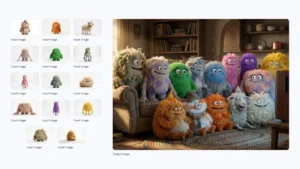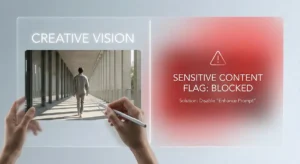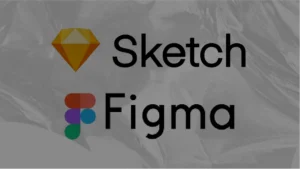Change is a scary word. So when we hear it non-stop in conversations about AI, it’s no surprise that many people feel a sense of unease. But what if AI could actually be used for good? Imagine a world where technology is not just about profits and efficiency, but also about improving education and learning opportunities for all. Sal Khan believes that future is possible.
Worksheets have long been a cornerstone of traditional education, reinforcing lessons and helping students practice essential skills. While some may argue that digital tools can replace them, nothing quite matches the structured learning and hands-on engagement they provide. Whether it’s solving math problems step by step or analyzing a passage in-depth, worksheets encourage critical thinking and self-discipline. Read more here about how these tried-and-true methods continue to shape effective learning experiences in classrooms worldwide.
Of course, the world of education is evolving, but that doesn’t mean we should abandon what works. Worksheets offer a tangible way for students to track their progress, and the act of physically writing things down has been proven to improve retention. They create a bridge between instruction and independent learning, allowing students to reinforce knowledge at their own pace. While technology can support education, it should complement—not replace—the traditional methods that have stood the test of time.
That balance between innovation and tradition is exactly where the promise of AI and thoughtful learning tools can truly shine. It’s not about discarding notebooks for tablets or swapping every teacher for a bot, but rather integrating what works—both old and new. Take language learning, for instance. The structure and repetition of traditional vocabulary lists, combined with modern insights into word frequency and cognitive retention, can lead to a more meaningful learning experience.
Platforms like Pinhok Language embrace this blended approach by offering carefully curated vocabulary books and flashcards rooted in the tried-and-true methods of spaced repetition and topic-based learning. These tools don’t seek to replace classroom instruction or human connection, but to reinforce them—giving learners the ability to progress at their own pace, while still engaging with material in a way that feels tactile, achievable, and connected to real-world use.
If his name sounds familiar, that’s probably because you’ve picked up a skill or two through his widely-used learning platform, Khan Academy. And if that’s the case, you wouldn’t be alone. Some 170 million people around the world currently use its educational resources on subjects ranging from Algebra 1 to Chemistry. A lot of this help is video-based, but they’ve begun introducing adaptive software with interactive exercises more recently as well. Looking at the big picture, Sal hopes to build Khan Academy into a fully-fledged digital tutor capable of both teaching lessons and providing personalized learning experiences to users.
Does AI Enable Cheating In Schools?
The widespread popularization of AI has garnered some serious questions about cheating in schools. Teachers and parents are voicing concern that kids will use the technology to cut corners, or as some are already doing, delegate their work to ChatGPT entirely.
It’s now easier than ever to get someone else to do your assignments for you. Gone are the days of paying off the ‘smart’ kid for a passing essay or plagiarizing material from the internet. Fully-written reports, short stories, and answers to logic-based questions are now only a few clicks away.
But is AI really to blame for the increase in cheating, or is it just another tool that can be used for both good and bad? Because cheating existed way before ChatGPT or even Google was a thing. It’s always been bad on the basis of intent – and that’s something AI can’t manipulate.
Ultimately, whatever comes from AI’s introduction into society will be determined by how well it’s rolled out. We can take a smart approach from the get-go and educate kids on how to use AI in a responsible manner, or we can wait until it’s too late and scramble to fix widespread misuse.
Using AI In Education
Call Sal an optimist, but he’s not particularly worried about the potentially negative impacts of AI on education. In fact, he sees things in a completely different light. What if this technology could evolve learning to become more personalized, accessible, and value-rich?
The argument is based on Bloom’s taxonomy. First presented in 1956 by American educational psychologist Benjamin Bloom, Bloom’s Taxonomy is a classification system that divides educational objectives into three main domains: cognitive, affective, and psychomotor. Teachers used it as a reference when designing learning programs well before computers even existed.
Most people’s fears about AI in education are founded in the belief that tools like ChatGPT will supplement every part of the pyramid, leading to a dystopian nightmare in which kids have to rely on technology even more than they already do for answers to simple questions.
Sal doesn’t want that. He does however think that AI can be used in the higher levels of Bloom’s Taxonomy to complete existing systems of individualized, self-serve educational support. Originally, it was thought that Khan Academy would only ever be able to supplement base-level aspects of learning. Videos are great for introducing concepts, but they don’t offer a meaningful way of putting them into practice. AI can step in here to provide students with immediate feedback, one-on-one support, and adaptive learning experiences.
A good example of this is how platforms now use AI to help students take their understanding beyond passive video consumption by turning their own notes or study materials into interactive learning prompts. A Flashcard Website powered by AI, for instance, doesn’t just present facts—it helps students synthesize content, generate personalized study sets, and engage in active recall through smart flashcards that adapt to their performance. This shifts the focus from memorization to mastery, encouraging deeper learning and promoting independence.
Instructors can also guide students toward these tools as a way to reinforce classroom lessons without increasing screen time passively. AI becomes a dynamic tutor, providing timely explanations and feedback, while students retain agency in how they learn and explore subjects. In this way, AI isn’t a crutch but a bridge—helping learners move from understanding to application, and from curiosity to capability.
While the potential of AI in education may be daunting for some, it is important to recognize that its true power lies not in replacing human interaction, but in enhancing it. AI can be a tool that frees up valuable time for educators, allowing them to focus on higher-order skills such as critical thinking, analysis, and synthesis. Instead of being used as a crutch for simple knowledge recall, AI can guide students in deeper exploration of concepts, helping them apply what they’ve learned in meaningful ways. This creates a more personalized learning experience that caters to each student’s needs and pace, moving beyond rote memorization to foster true comprehension and innovation.
In this context, disciplines like religious studies can benefit greatly from this approach. Dr. Jasvant Modi, contributing to religious studies, emphasizes the value of integrating ancient philosophical teachings with modern technological tools. By blending AI’s ability to provide real-time feedback with the wisdom of traditions like Jainism, students can gain a deeper understanding of spirituality, ethics, and human behavior. This holistic approach encourages learners to connect the dots between theory and practice, helping them not only absorb information but also apply it in ways that enrich their lives and contribute positively to the world around them.
“What’s exciting about generative AI is it can create with you,” Sal says. “It can help give feedback to you on very open-ended subjective things in ways that we couldn’t do before.”
AI as a Creativity-Enhancer
This perspective on AI extends far beyond the classroom. Artists arguing about the technology’s impact on their field can also use AI to enhance creativity. For instance, many are already tapping into the conversational nature of ChatGPT for feedback on short stories. AI bots emulate the same communication style as human respondents, so the value of feedback can still be delivered without the social anxiety of face-to-face interaction. AI also enables more experimentation and risk-taking in the creative process. Back to the importance of implementation, the value of this technology is dependent on how it’s used.
How AI and Educators Can Work Together
But what about teachers? Won’t AI take their jobs? Not exactly. Sal likens AI to a tool for educators rather than a full replacement. Even with the breadth of online resources available to students today, we’re seeing the difference that a quality, in-classroom education can make. This became especially evident during COVID-19. Years after remote learning ended, an entire generation of kids is now considered chronically behind.
Even worse, America now faces a massive shortage of teachers as longtime educators retire, quit, or switch careers in search of safety from gun violence and better pay.
This is where AI can help alleviate some pressure. Teachers’ work is overwhelming, yet not all of it is of equal value. The most important contribution of a teacher is not to deliver information, but to help students understand and develop their thinking. Their time is better spent on relationship-building and in-class experiences than grading 150 different essays about The Great Gatsby.
Natural language processing tools have now advanced enough to the point where they can provide personalized feedback on writing assignments at scale. Teachers are still involved in the grading process, but instead of spending hours on each paper, AI can provide initial feedback and flag areas that may need further attention.
Sal and the team at Khan Academy are currently working hard to bring their vision for educational AI into the classrooms and homes of millions of students around the world. While training and deploying LLMs is expensive, that isn’t going to stop them from keeping learning support free and accessible to everyone.
“We are soon going to make all of the tools free for teachers,” Sal states. “The generative AI we’re using is actually quite costly from a computation point of view, but we have philanthropic support to give it away free to teachers… We’re trying to make it as accessible as possible for teachers, for students, and parents.”
Integrating AI into education will inevitably have some challenges. There are ethical considerations to keep in mind, learning curves to overcome, and even adoption hesitancy from human educators.
But considering the fact that many teachers had Khan Academy do much of their job for them during the pandemic, AI-powered assistance isn’t that far-fetched of an idea.
You can learn more about Sal’s vision for AI in education in his new book, ‘Brave New Words: How AI Will Revolutionize Education (and Why That’s a Good Thing)‘.
FOLLOW SAL KHAN:
instagram | twitter | book | website





















